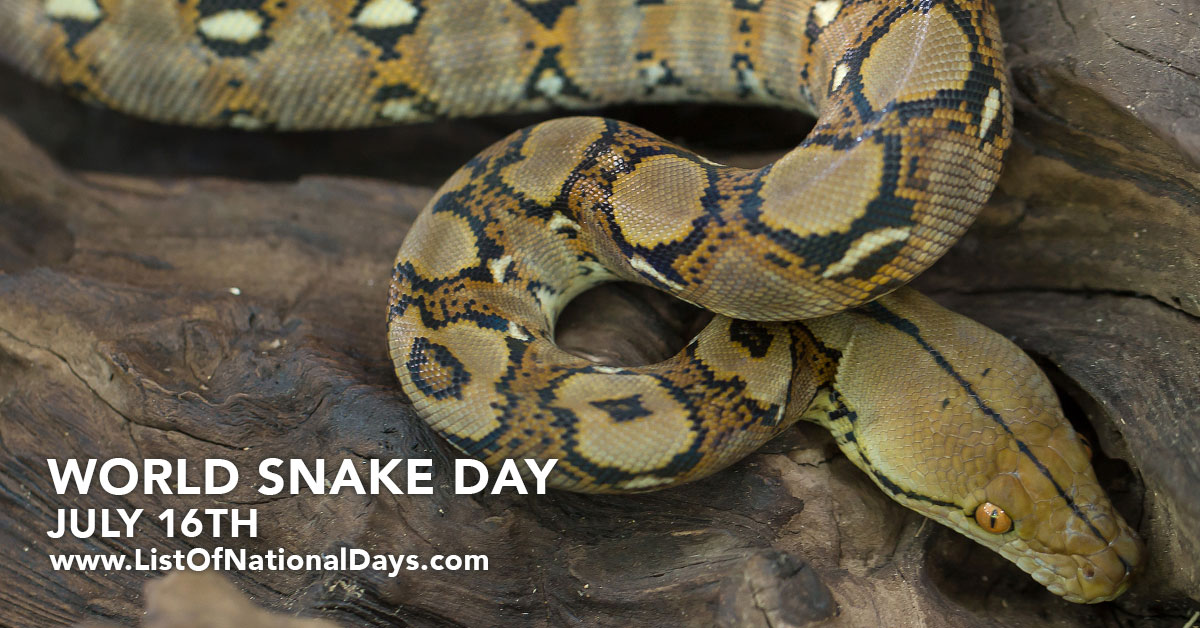World Snake Day is an annual event celebrated on July 16th that aims to raise awareness and promote conservation of snakes worldwide. It recognizes the ecological importance of snakes and their role in maintaining the balance in ecosystems.
#HASHTAGS
#WorldSnakeDay
World Snake Day is celebrated annually on July 16th
| Year | Date | Day |
|---|---|---|
| 2023 | July 16 | Sunday |
| 2024 | July 16 | Tuesday |
| 2025 | July 16 | Wednesday |
| 2026 | July 16 | Thursday |
| 2027 | July 16 | Friday |
| 2028 | July 16 | Sunday |
| 2029 | July 16 | Monday |
| 2030 | July 16 | Tuesday |
| 2031 | July 16 | Wednesday |
| 2032 | July 16 | Friday |
| 2033 | July 16 | Saturday |
| 2034 | July 16 | Sunday |
| 2035 | July 16 | Monday |
